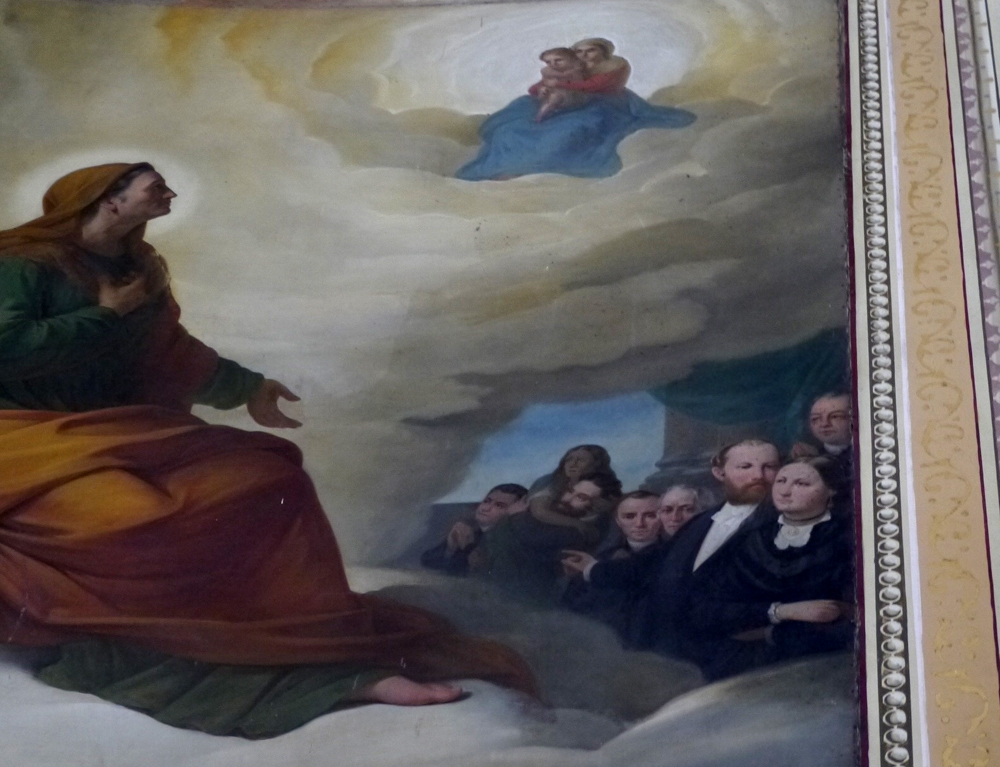The Seigneurie of Milles-Îles, part two
With the sudden deaths of both her parents in 1841, Marguerite Virginie Lambert Dumont was a three-year old orphan who stood to inherit a vast tract of land, the seigneury of Milles-Îles.
Her father, Louis Charles Lambert Dumont, co-seigneur of Milles-Îles, had named Virginie’s adoptive grandfather, Gabriel Roy, as the child’s legal guardian in case something happened to him. Roy was a wealthy landowner in Saint-Laurent, on the island of Montreal and an appointed member of the Legislative Council for Canada East. He and his wife, Sophia Bagg, had raised Virginie’s mother, Mary Sophia Roy Bush.
Virginie was sent to live with the Roy family in Saint-Laurent, but Roy, now 71 years old, realized he was unable to raise the child. She returned to Saint-Eustache where notary Frédéric-Eugène Globensky became her new guardian. He and his wife, who had no children of their own, brought her up, and she attended school at the convent in the village.
Everyone expected that when Virginie became an adult, she would marry her cousin Charles Auguste Maximilien Globensky (1830-1906), known as C.A.M. But in 1854, the government announced that the seigneurial system was to be abolished. Virginie’s marriage to C.A.M. was fast-tracked, with special permission from the church, and on July 21, 1854 she married C.A.M. She was just 15 years old.


C.A.M. was a tall and imposing man, not always liked in the community, but respected for his honesty and known for his intellect and his many interests, especially agriculture and railways. He is still remembered for the book he wrote about the causes of the Rebellion of 1837 in Saint-Eustache. His father, Maximilien Globensky, a lieutenant-colonel in the British Army, had led a company of volunteer militia at the Battle of Saint-Eustache. In the book, C.A.M. explained his father’s actions.
The bitter fallout from the rebellion hung over Saint-Eustache for many years. But the aftermath of the battle was not the only shadow over Virginie’s life. There were disputes over the shared inheritance of the seigneury and its deep debts. Virginie was in court several times, fighting family members over various property disputes.
Although the seigneurial system had been abolished, it took decades to dismantle. A committee evaluated property values and the habitants had the right to buy their farms from the seigneurs or continue to pay rent. As co-seigneurs of Milles-Îles, a territory so vast that it included the sites of the city of Saint-Jerome and the town of Saint-Sauveur, Virginie and C.A.M. were very wealthy.
C.A.M. built a new seigneurial manor house in Saint-Eustache and the family moved into it in 1865. And every Sunday, Virginie and her growing family sat in the front pew of the church, a privilege reserved for seigneurs.
Virginie and C.A.M. had eight children, and many of their descendants are still living today. When Virginie’s health declined, she made out her will, leaving C.A.M. as her sole beneficiary. She died August 19, 1874, age 36.
That same year, C.A.M. visited Rome and brought home a painting of the Adoration of Saint Anne in which Virginie, C.A.M. and the village priest were portrayed sitting at the saint’s feet. This huge painting hangs behind the altar of the parish church in Saint-Eustache to this day.
See also: Janice Hamilton, “The Doomed Marriage of Mary Sophia Roy Bush and Louis Charles Lambert Dumont,” Writing Up the Ancestors, Jan. 27, 2015, https://www.writinguptheancestors.ca/2015/01/sophia-mary-roy-bush-and-louis-charles.html
post edited April 24, 2018 to add photo. all photos by Janice Hamilton
Notes :
Saint-Eustache is primarily a bedroom suburb of Montreal, about 40 minutes from the city, but the old section of the town is well worth a visit. The parish church is still pock-marked by the cannon fired at it during the 1837 Battle of Saint-Eustache. Flour is still made in the old mill, built by Virginie’s grandfather and modernized by her husband, and there are many mementoes of the Rebellion of 1837 in the town museum, located in the mansion that C.A.M. built many years after Virginie’s death.
The two main sources for this article are in French: a book by Yvon Globensky, Histoire de la Famille Globensky, Montreal: Les Éditions du Fleuve, 1991; and an online article by André Giroux, Les héritiers d’Eustache-Nicolas, http://www.patriotes.cc/portal/fr/docs/revuedm/06/revuedm06_6.pdf
In Quebec, birth records used the mother’s maiden name, and death records for women were also under the maiden name. But that does not mean women had any more rights than women elsewhere. A married woman’s property belonged to her husband unless she had signed a marriage contract making her separate as to property. In Virginie’s case, the seigneury was the dowry she gave to C.A.M..

